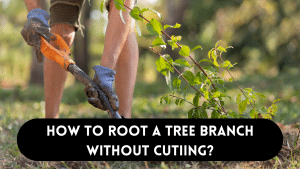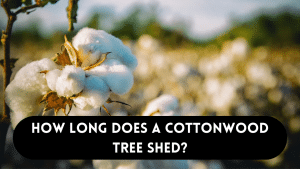Remove tree roots from lawn manually requires some basic tools. You’ll need a sturdy shovel, a root saw, protective gloves, and safety goggles to shield your eyes.
Step-by-Step Guide for Digging Out Tree Roots
a. Identify the Roots: Locate the problematic roots and mark them for removal.
b. Clear the Area: Remove any surrounding debris or rocks to avoid obstacles.
c. Dig Carefully: Use the shovel to dig around the root’s perimeter, gradually exposing it.
d. Cut the Roots: Use the root saw to cut the exposed roots carefully.
e. Pull Out the Roots: Gently pull the cut roots out of the ground.
f. Fill the Hole: After removing the roots, fill the hole with soil and compact it.
Safety Precautions and Tips
Removing tree roots can be physically demanding, so it’s essential to take some precautions:
a. Wear Protective Gear: Use gloves and safety goggles to protect yourself from injuries.
b. Lift Properly: Lift heavy roots using your legs, not your back, to avoid strains.
c. Beware of Underground Utilities: Check for underground cables or pipes before digging to avoid accidents.
Pros and Cons of This Method
Pro: Manual removal allows complete control over the process, ensuring careful root removal. Cons: This method can be labor-intensive and time-consuming, especially for large trees with extensive root systems.
Treat the Roots with Chemicals
Types of Chemical Herbicides for Root Killing
Several chemical options are available for killing tree roots, including rock salt, Epsom salt, and table salt. These substances dehydrate the roots, making them easier to remove.
Proper Application and Dosage Guidelines
Follow the instructions on the herbicide packaging carefully. Use the appropriate dosage based on the size and type of tree.
Environmental Concerns and Precautions
While chemical methods can be effective, they may also harm the environment and other plants in your lawn. Use chemicals sparingly and avoid excessive usage.
Comparison of Chemical Methods
Different chemicals may affect different tree species differently. Research the specific herbicide suitable for your tree type.
When to Use Chemical Treatment and When to Avoid It
Chemical treatments should be considered a last resort, especially if manual removal or professional assistance is not feasible.
Hire a Professional Tree Stump Killer
Reasons to Hire a Professional
A professional tree stump killer has the equipment, knowledge, and experience to handle the job safely and efficiently.
How to Pick the Best Tree Stump Remover
Choose insured, licensed experts with a history of removing roots.
What to Expect from the Service
A professional service will assess the situation, determine the best removal method, and perform the task with minimal impact on your lawn.
Cost Considerations and Quotes
Obtain quotes from different professionals to compare prices and services.
Ensuring Safety and Compliance with Regulations
Ensure the hired professional follows safety standards and adheres to local regulations.
Remove the Sod in the Affected Area
When This Method is Suitable
If the roots are near the surface and cannot be removed without harming the tree, removing the sod and creating a new garden bed might be the best option.
Steps to Remove Sod and Create a New Garden Bed
a. Use a sod cutter to remove the existing sod.
b. Add a layer of mulch to promote healthy plant growth.
c. Plant new vegetation in the garden bed.
Benefits of This Approach Removing the sod allows you to address the root issue while creating a fresh and attractive garden area.
Potential Impact on the Tree and Lawn Removing sod may temporarily disrupt the tree’s root system, but it is often a necessary step for resolving root-related problems.
Tips for Remove Tree Roots from Lawn Safely
Importance of Evaluating Root Health and Tree Stability
Assess the tree’s health and the extent of root damage before removal.
Following Todd Marieta’s Guidelines for Root Removal
Stick to the recommendation of removing up to 25% of the tree’s roots, with a two-year interval between trimming.
The Significance of Waiting Periods Between Root Removals
Allowing the tree time to recover between root removal sessions ensures its long-term health.
Signs of Tree Stress and When to Seek Professional Advice
Watch for signs of stress in the tree, such as wilting leaves or dying branches, and consult a professional arborist if needed.
Preventing Tree Root Problems on the Lawn
Selecting the Right Tree Species and Planting Location
Choose species with non-invasive root systems and plant them at an appropriate distance from structures and other plants.
Proper Tree Care and Maintenance to Prevent Extensive Root Growth
Regular tree pruning and maintenance can help keep the root system in check.
Using Root Barriers and Other Preventive Measures
Install root barriers to prevent roots from spreading into unwanted areas.
FAQs
FAQ 1: What tools are needed to remove tree roots from the lawn?
Removing tree roots from the lawn requires the right tools to make the process more efficient and safe. Here are the essential tools you’ll need:
Shovel: A sturdy shovel is essential for digging around the root’s perimeter and loosening the soil.
Root Saw: A root saw is designed specifically for cutting through thick roots, making it easier to remove them.
Gloves: Protect your hands from cuts and blisters with a good pair of gloves.
Safety Goggles: Keep your eyes safe from debris and dirt during the root removal process.
Remember to choose high-quality tools that are appropriate for the size and depth of the roots to ensure effective removal without causing unnecessary damage to your lawn.
FAQ 2: How to prevent tree roots from growing in the lawn?
Preventing tree roots from encroaching on your lawn can save you future headaches. Here are some tips to keep tree roots in check:
Proper Tree Selection: Choose tree species with non-invasive root systems that are less likely to spread widely.
Planting Distance: Plant trees at a safe distance from structures and other plants to prevent root overlap.
Regular Pruning: Regularly prune the tree’s branches and roots to manage their growth.
Root Barriers: Install root barriers around tree planting areas to restrict root expansion.
Monitoring and Maintenance: Regularly inspect your lawn for signs of root intrusion, and take timely action if necessary.
By following these preventive measures, you can create a harmonious balance between your trees and lawn.
FAQ 3: What are the risks of removing tree roots from the lawn?
While removing tree roots can address specific issues, it also comes with some risks:
Tree Health: Over-removal of roots can weaken the tree, affecting its stability and long-term health.
Lawn Damage: The removal process can cause damage to the lawn, creating unsightly patches and uneven terrain.
Risk of Infection: Open wounds on the tree caused by root removal may expose it to infections and pests.
Structural Impact: Removing large roots near structures can compromise their stability.
To minimize risks, it’s crucial to approach root removal carefully, considering the tree’s health and consulting professionals if needed.
FAQ 4: What is the fastest way to get rid of tree roots?
The fastest way to remove tree roots is by hiring a professional tree stump killer. These experts have the knowledge, tools, and experience to swiftly and safely remove roots from your lawn. They use specialized equipment and techniques to efficiently extract the roots without causing extensive damage. While it may involve some cost, the speed and expertise of professionals make it a worthwhile investment for a quicker resolution to your tree root issues.
FAQ 5: How do you permanently remove tree roots?
Permanently removing tree roots requires careful consideration and expert handling. To achieve a long-lasting solution:
Professional Assistance: Consult with a certified arborist or tree care expert to assess the root problem and determine the best removal approach.
Effective Removal Techniques: Professionals may use advanced methods such as stump grinding or chemical treatments to ensure thorough and lasting root removal.
Proactive Preventive Measures: After removing the roots, implement preventive measures like root barriers to prevent regrowth.
Remember that complete eradication of all roots might not be possible or advisable, as some roots are essential for the tree’s stability and nourishment. Prioritize the health and well-being of your trees throughout the process.
Conclusion
Removing tree roots from your lawn may be a challenging task, but it is essential for maintaining a healthy and beautiful outdoor space. Whether you choose manual removal, chemical treatment, or seek professional assistance, remember to prioritize safety and environmental considerations throughout the process. Following the tips in this guide, you can effectively address tree root issues and enjoy a flourishing lawn and thriving trees for years to come.




